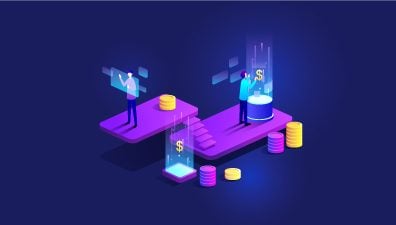HR digital transformation is an intriguing issue for some HR experts. What is more, in light of current circumstances, advanced innovation has the potential and capacity to change HR as far as we might be concerned. Yet, while it is one thing to discuss computerized HR change, it’s unusual activity.
The rate and extent of HR digital transformation offices are both speeding up and widening. As well as improving HR measures through computerization, present-day HR divisions are generally liable for driving progressive change at the authoritative level. Not just that, they additionally should do it in a way that is basic, important, and interesting to an undeniably detailed scope of partners.
As far as we might be concerned, HR is continually changing and developing—to such an extent that it is unfathomably hard to monitor each new pattern that arises. However, on the off chance that you take a gander at the higher perspective of what has been occurring a ridiculous decade, one significant wonder appears.

The HR division of old that depends on manual cycles and gut-feel is on, and it is being supplanted by an HR office that is computerized and information-driven. In the present article, we plunge further into the wonder of HR progressive change: what is it, for what reason is it important, and how would you go about it?
Table of Contents
What is digitalization in HR?
An HR digital transformation is the execution and utilization of innovation to enlarge an HR office’s abilities. The objective of an HR computerized change is two-overlap: to automate human resources digital transformation to set aside time and cash, gather and investigate information from those cycles to settle on more information-driven choices.
HR computerized change can take numerous structures:
- Rather than pursuing every resume from work searchers who apply to your organization, a candidate global positioning framework (ATS) can naturally sift through awful up-and-comers utilizing catchphrases and information from your high-performing representatives.
- Rather than physically strolling each fresh recruit through a lot of onboarding administrative work, onboarding programming mechanizes and digitizes the cycle.
- Rather than advancing laborers dependent on impulse, progression arranging frameworks can wed information on worker execution, individual profession objectives, and authoritative abilities to give groups more data to advise their advancement choices.

You get the significance. It is changing HR—finance, enrolling, consistency, learning, and execution of the executives, everything—from what it used to be (paper-driven, with choices dependent on intuition and assessment) to what it should be to dominate in the cutting edge business world (innovation-driven, with choices dependent on problematic information).
What sounds straightforward on a fundamental level, however—digitizing an HR interaction—is very perplexing. Every execution is its mountain to ascend: characterizing an objective, distinguishing individuals and assets you need, getting administration purchase in, investigating and making an innovation buy, making the arrangement, setting up your association for the change, testing, streamlining, and governing if the venture was a triumph or disappointment.
You likewise need to factor in how every one of these mountains fits together to make your HR biological system. These innovations educate each other, all things considered—your participation information is utilized to figure finance, your recruiting needs influence your labor force arranging needs, and so on. Without a sound change system and an intensive coordination measure, one messed-up execution could bring the entire environment smashing down.
That being said, an HR digital transformation is a mind-boggling and requesting undertaking. Numerous organizations—regardless of the earnestness to “get with the occasions”— just are not set up to make this progress.
Benefits of HR digital transformation
Endeavors are developing, and there is a requirement for changing over guarantee into reason along these lines constraining them to incorporate HR digital transformation to convey advancement arrangements. The advantages of HR digital transformation incorporate making the labor force of things to come, guarantee better representative experience, increment exactness in Dashboards and Analytics Data, deal with the labor force and increment proficiency and agility to meet advancing business needs.
#1. Mingle discoveries at every turn
The Digital change framework can handle data sources and criticism effectively from clients and partners.
#2. Create adjusted change groups
Users, HR specialists and change specialists bunches are offset in the middle with the utilization of advanced change just as business specialists and innovation to guarantee arrangements are made considering clients instead of forced upon clients.
#3. As a feature of change measure incorporate progressing the executive’s changes
For nonstop endeavors to carry out the ideal changes appropriation of the new arrangement is basic, so workers may not be getting back to the past measures that were insufficient to the business.
#4. Boost HR efficiency
It requires 5 seconds to apply for leave in LeaveBoard. Group supervisors are naturally advised and can immediately approve. Work on your interior cycles and lift correspondence. Track past representative exercises to anticipate future results.
#5. Save time and money
It is an ideal opportunity to cut manual work and decrease pressure with authoritative assignments. At the point when your kin utilizes your time proficiently, they fail to remember redundant undertakings and are more beneficial. Your finance report will be prepared in a moment or two. Also, there are roundabout reserve funds from utilizing such arrangements, i.e., producing quarterly reports or managing convey forward exercises.
#6. Gain better employee experience
By offering admittance to development to your kin, you are expanding proficiency, spryness, and efficiency. Also, your staff will be more faithful, serious, drawn in and glad. They will zero in on significant work and save important time committed to ROI-creating exercises. Because of cloud-based applications, large information, measure mechanization, shrewd combinations, and bots, the HR office can make an incorporated representative encounter to help their progressing needs.
#7. Centralize employee data
Discover representative information effortlessly. Dispose of messiness and paper documents. Representative data sets offer a more successful approach to convey the data that you need when you need it. Information-driven techniques will turn into a fundamental mark of serious separation in each business.
HR digital transformation examples
Most positions that are dreary can be mechanized. Associations utilize computerized advancements to mechanize an expansive cluster of HR measures. These include worker onboarding and offboarding, approving and following timesheets, leaving demands, representing preparing, and overseeing benefits. In this segment, notwithstanding, we will take a gander at two instances of digitization in HR measures in more detail: AI enlisting investigation and execution of the executives.

#1. AI recruiting analytics
Despite the condition of the economy, Human Resources divisions are overpowered with enlisting assignments. Amid low joblessness, businesses should effectively seek after and draw inappropriate applicants or hazard losing them to a contender. There is an absence of occupations. HR groups are overpowered with an inundation of requests for employment from competitors frantic for work. Robotization, like human-made reasoning (AI), can smooth out these cycles while permitting associations to settle on more educated recruiting choices through the assortment and investigation of information.
Current enrolling and recruiting measures are considerably not quite the same as they were before. It was pretty recently that enlisting consisted of gathering and figuring out enormous piles of resumes. HR groups would set up interviews with those up-and-comers that appeared to be qualified, maybe save a couple of outlines for future openings, and toss the rest in the rubbish.
Today, the information that HR offices gather from up-and-comers is an essential resource. Utilizing AI, HR divisions can sort out enormous datasets permitting them to painstakingly focus on their enlisting endeavors and settle on better-employing choices. Think about that as an awful recruit can cost an association to cause a critical monetary misfortune. By breaking down factors like how well a worker will find a way into a job and how long the individual will remain with the association, spotters can settle on better choices and limit hazards.
It is likewise essential that via robotizing dull and tedious errands, scouts have more opportunity to lead proactive employing and invest more energy with the possibility to recognize better fits.
#2. Performance management
The board’s representative execution has verifiably been a wasteful HR measure, requiring the manual assortment and audit of assessment structures. Robotization eliminates these monotonous paper-based cycles and lifts profitability and maintenance through objective setting, better criticism, and additional preparation openings.
Defining and discussing objectives with representatives is a critical part of the practical execution of the executives. With robotization, representatives and directors can monitor achievements in an exhibition of the executives’ framework without much of a stretch. Following implementation, information helps HR offices to distinguish bottlenecks in work processes. With mechanization, notices and updates can be shipped off the two representatives and administrators to encourage the culmination of significant achievements.
While giving criticism, an HR computerization framework permits administrators to convey more educated and focused input. With admittance to more information, supervisors can likewise distinguish singular worker preparing needs. This improves profitability as well as energizes professional development, a significant part for present-day HR offices.
HR digital transformation strategy
#1. Establish a clear goal
Once more, before going off on a significant groundbreaking HR venture, first build up a characterized objective that bodes well from a business perspective. More often than not, this objective will be to address an issue that representatives experience. That is the reason.
In a cycle of HR change, the spotlight should constantly be on the representative as an end-client. It is additionally why you need to allow your representatives to test any innovation themselves first before you execute it.

#2. Get everyone on board
This implies all partners, from workers to the C-suite and everybody in-between. With regards to a computerized HR change – something that will influence the whole association – you need all the help you can get with the end goal for it to turn into a triumph.
#3. Do not overcomplicate things
We have said this previously – in our ‘What is Digital HR post’ – it is obvious. Continuously start straightforward and little. Take a gander at the regions of your HR measures that could do with a computerized makeover (preselection and enlistment, onboarding and inboarding, learning and improvement, finance the executives, etc.)—discussion about this with your representatives and the individuals from the C-suite. Ask them what they think ought to be a need.
#4. Prioritize ideas
This will, without a doubt, bring about an extensive rundown of thoughts. Focus on them dependent on affect and exertion. The previous significance, the business effect of digitizing opinions, and the last importance of the time and cash it would take to get the plans to go computerized. Start with the thoughts that are high effect and low exertion. They will help you construct the business case for computerized HR and make you go rapidly.
#5. Assess performance
Attempting and carrying out computerized advances is incredible yet does not bode well on the off chance that we do not take a gander at their outcomes. Subsequently, we need to evaluate what works and what does not fundamentally.
The only route for us to progress is to take care of genuine issues with innovative arrangements that tackle these issues.

#6. Culture is important
Advanced innovation alone is not sufficient for an HR change. Not to mention a progressive shift of a whole association. It is comparably much – maybe considerably more – about the mentality of everybody included. What is more, that has an inseparable tie to your organization’s culture.
From the new individuals you recruit, through your present labor force as far as possible up to the C-level, a computerized outlook is fundamental for an effective change in the broadest feeling of the word.
Final Thought
Not to complete on a weighty note, but rather if you like it, an HR computerized change is not discretionary. In a world that is digitizing at a high speed, with purchaser slice workers that do not have the foggiest idea about any better than for essentially anything in their lives to be advanced, HR and bosses can’t remain behind.











